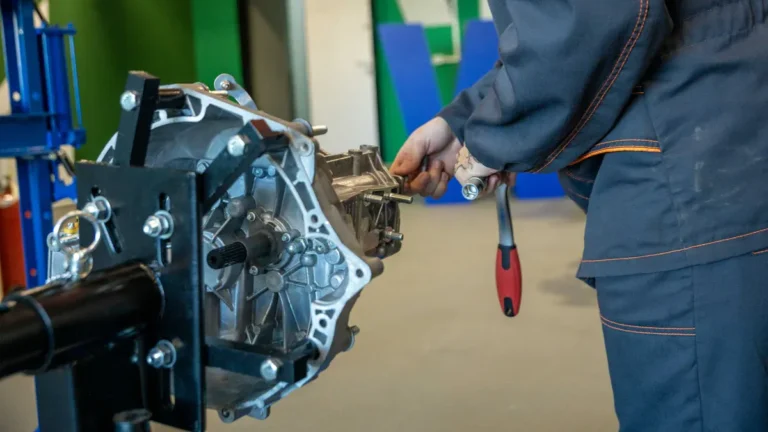LoJack devices are cleverly concealed in nearly 20 different spots within a vehicle to keep them well-concealed yet functional. Typical locations include under the passenger seat, inside the trunk near the spare tire, around the engine bay behind panels, near the OBD-II port, or tucked behind interior trim and seat frames. The wiring is carefully routed behind trim pieces or near VIN areas to avoid discovery. To confirm whether a vehicle has LoJack installed, one can look for small LoJack stickers on the registration or door jamb, check under and around seats and panels, consult the dealer or mechanic, or verify through the LoJack app. This strategic concealment balances the need for effective signal transmission and ease of service access while protecting the anti-theft device from tampering.
Common Locations Where LoJack Is Installed in Vehicles
LoJack devices are carefully installed in several discreet locations within a vehicle to remain concealed from thieves while maintaining reliable signal transmission for recovery purposes. Historically, the evolution of LoJack installation reflects advances in technology and changing automotive designs.
Common spots include under the passenger seat, inside the trunk near the spare tire, and tucked within the engine bay. Regional differences influence installation choices, as certain countries or states might prefer specific locations based on law enforcement infrastructure and climate conditions.
Occasionally, LoJack units are integrated near the OBD2 port or inside door jambs, areas that balance concealment and ease of access for authorized service. Through blending into factory-appropriate spaces and sheltered behind interior panels, these strategic installations optimize both security and functionality.
This subtle approach stems from decades of experience adapting to varied vehicle models and theft tactics.
How to Determine if Your Car Has a LoJack System
After understanding where the tracking device is usually concealed in a vehicle, the next step is figuring out whether such a system is actually installed in your own car. Begin with reviewing the vehicle’s registration and service history, as dealer disclosure or previous maintenance records could indicate LoJack installation. Seek a small yellow “LJK” or “LoJack” sticker in the glove compartment or near the VIN label. Contacting the manufacturer or dealership can confirm whether LoJack was factory-installed or added aftermarket. Mechanics can also inspect during routine service for concealed units. Utilizing the LoJack app or service platform can reveal whether your vehicle is registered with LoJack GPS technology.
| Identification Method | Description |
|---|---|
| Dealer Disclosure | Documentation indicating LoJack provision |
| Service History | Records noting system inspections or installations |
| Vehicle Inspection | Physical check for stickers, wiring, or hardware |
Key Features and Functionalities of the LoJack System
The LoJack system stands out because it gives people real protection after a car is stolen, using a covert transmitter that sends out a special signal only law enforcement can track, so your vehicle can be found fast—even though it’s concealed in a garage, behind dense trees, or in other tough spots where regular GPS could fail.
Besides theft recovery, modern LoJack devices also connect to your smartphone, letting you check your car’s location, see driving history, set up alerts for speed or unexpected movement, and even get notifications about your car’s health, all through a simple app. Because the system works directly with police and covers a wide range of vehicle types, owners can feel calm being confident their car is protected through reliable technology and a team ready to help when it matters most.
Theft Recovery Technology
How exactly does the theft recovery technology in a LoJack system work to protect vehicles? Once a vehicle is reported stolen and law enforcement enters the theft report into a statewide computer system, the LoJack’s covert transmitter activates.
It sends a unique, coded radio signal that law enforcement can track using specialized equipment in patrol cars, helicopters, and airplanes. This signal penetrates obstacles like garages and dense foliage, unlike GPS signals that require line-of-sight.
The system includes motion sensors, improving security by detecting unauthorized movement. Beyond recovery, LoJack offers benefits like privacy protection—since activation only occurs upon police involvement—and insurance incentives for users, as many companies provide discounts for vehicles equipped with LoJack.
This integration leads to high recovery rates and reduced theft-related losses through swift vehicle location and retrieval.
Connected Car Features
Connected car technology in the LoJack system goes well beyond basic stolen vehicle recovery. It integrates advanced features like driver profiles, allowing personalization for multiple users, and supports in car payments for tolls or parking. The system connects via an app that provides real-time GPS alerts, trip history, and geofence notifications. Motion sensors monitor vehicle movement, adding a layer of security even before theft is detected. These connected functionalities work seamlessly to keep drivers informed and in control, enhancing safety and convenience.
| Feature | Description | Benefit |
|---|---|---|
| Driver Profiles | Custom settings for each driver | Personalized experience |
| In Car Payments | Enables seamless toll and parking fees | Saves time and effort |
| GPS Alerts | Real-time location updates | Immediate theft awareness |
| Trip History | Records routes and driving behavior | Helps monitor vehicle use |
Installation Practices and Concealment of LoJack Devices
Because LoJack devices are intended to remain concealed from thieves and tampering attempts, their installation focuses heavily on concealment within the vehicle.
Installers must follow strict concealment standards and consider installer liability to guarantee the device remains obscured yet functional.
The installation integrates wiring discreetly in factory-appropriate spots, often behind panels or seat frames to avoid discovery.
- Placed under interior panels or seat bases for stealth and protection
- Installed near the OBD2 port or dashboard wiring with careful wiring integration
- Concealed behind door jamb covers close to VIN labels following concealment standards
- Positioned within areas allowing consistent signal transmission while minimizing risk of tampering
These best practices meet legal and manufacturer guidelines, balancing security with reliable operation for effective theft recovery.
Law Enforcement Integration and Vehicle Recovery Process
Law enforcement agencies seamlessly integrate with the LoJack system to enable rapid recovery of stolen vehicles. This integration relies on interagency coordination across federal, state, and local levels, allowing the LoJack signal to be traced via police cars, helicopters, and airplanes equipped with specialized tracking computers.
Once a vehicle is reported stolen and entered into the statewide system, the concealed LoJack transmitter activates, emitting a uniquely coded radio frequency that penetrates obstacles like garages or dense foliage. Law enforcement efficiently follows this signal to locate the vehicle with minimal delay.
During recovery, they handle evidence cautiously to preserve the integrity of the case, ensuring legal procedures are respected. This seamless cooperation between LoJack technology and law enforcement dramatically increases the chances of vehicle recovery while reducing theft-related stress for owners.
Accessing and Using LoJack Services Through Consumer Tools
The LoJack app provides vehicle owners with real-time tracking features that make it easier to monitor their car’s location and status. Users receive alerts and notifications about significant events, such as unauthorized movement or geofence breaches, helping them stay informed and act quickly.
These consumer tools create a direct connection to the LoJack system, enhancing security and peace of mind through putting crucial information right at the user’s fingertips.
LoJack App Functions
Ever curious how you, as a car owner, can stay connected to your vehicle even while you’re not behind the wheel?
The LoJack app offers a user-friendly gateway to track and manage your car with effortless user onboarding and accessibility options that simplify setup.
It lets owners:
- Monitor real-time vehicle location and receive GPS alerts
- Set customizable geofences and get notified when boundaries are crossed
- Review trip history to analyze driving patterns and habits
- Access vehicle health metrics like battery levels and speed data
This app bridges the gap between security and convenience, enabling users to proactively protect their vehicles.
Through integrating these features, owners gain peace of mind in daily use and during unexpected events.
The app’s intuitive design balances detailed data with clear accessibility, making vehicle oversight straightforward for all skill levels.
Vehicle Tracking Features
After using the LoJack app to set up vehicle alerts and view location history, many people ponder what else they can do to keep an eye on their car while they are not in it. The LoJack system offers more than basic tracking; users can customize geofences to receive alerts whenever their vehicle enters or leaves specified zones.
It also provides speed notifications and trip history, helping monitor driving habits. Privacy considerations come into play here, as sharing location and driving data requires clear user consent and secure data handling.
Subscription pricing varies depending on the level of service, from basic stolen vehicle recovery to full connected car features, making it necessary to assess which package fits one’s needs. This approach balances thorough monitoring with respect for personal privacy.
Alerts and Notifications
While LoJack’s primary function is stolen vehicle recovery, its alert and notification features expand its usefulness through keeping users constantly informed about their vehicle’s status. These notifications are delivered via the LoJack app, allowing for real-time updates that help vehicle owners stay connected without overwhelming them.
Managing alert fatigue is essential; the system offers customizable settings to balance timely updates and privacy concerns. Notification privacy also guarantees sensitive information is securely handled, considering users’ comfort with data sharing. Key alert features include:
- Geofence breach alerts notifying whenever the vehicle moves outside preset boundaries
- Speed alerts that warn in case the car exceeds designated limits
- Battery health notifications to prevent unexpected failures
- Theft recovery activation messages guaranteeing users are immediately informed
These tools bolster peace of mind while respecting user control over alert frequency and privacy.



